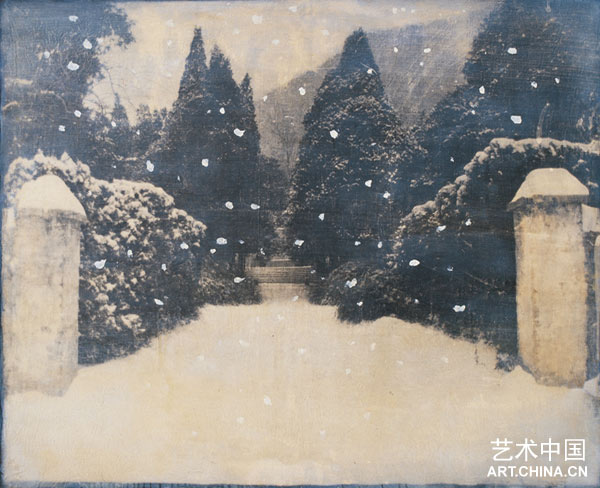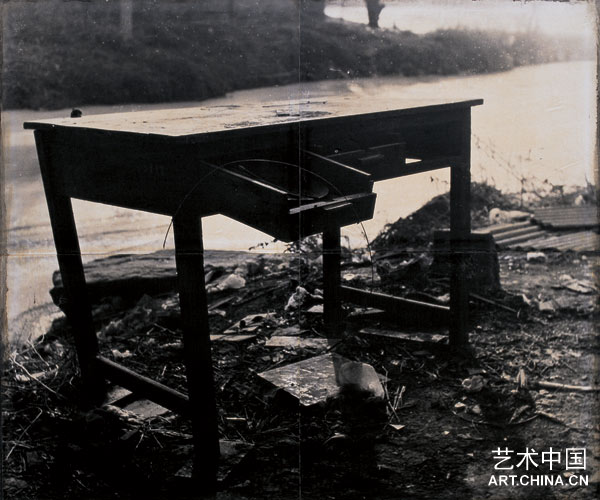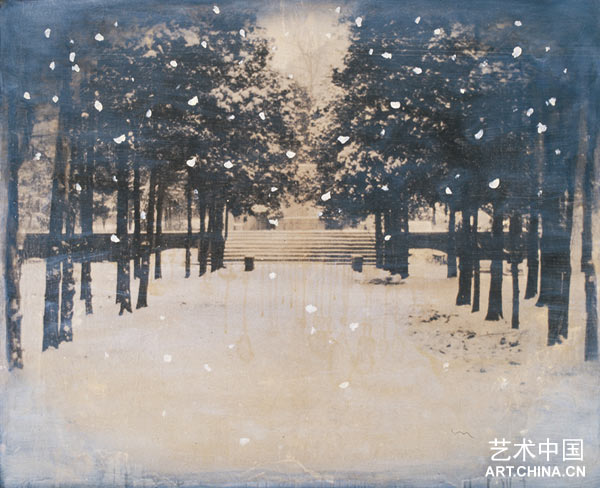
“我不喜欢悲哀, 但是它存在于历史之中, 这一点对我们的未来很重要。”
“雪净化历史”
仁艺术中心很荣幸地推出殇—师若个人作品展。 展览包括艺术家围绕着中国悲剧性的历史的摄影作品和综合材料作品。
作为画家、摄影家、导演的师若,其作品充满着使人产生抑郁和悲剧性的情感,通过艺术家自身对中国历史的回想,分析研究中国知识分子从古至今一直持续着的斗争。
此次展览展出的摄影作品包括有关清朝晚期改良主义者、思想家和历史学家梁启超 (1873-1929) 坟墓及无名烈士坟墓的作品,以及90年代拍摄于圆明园的作品,这些都献给无名的艺术家。
师若通过把永驻不变的建筑与时间腐蚀的风景、物体结合起来,展示出他对存在周期本质的理解。
20岁时当过道家修士的师若,解释在他的照片中经常出现的雪代表着纯洁。 通过雪来试图净化过去的痛苦。师若对历史的态度类似一个文人: 在政治混乱的时期, 决定远离世俗, 以艺术创作和于大自然的结合给以自己慰籍。 艺术家心里所产生的痛苦来源于他的分离与自身卷入的精神矛盾。
师若简历
历史与心灵的风景——师若作品
"I don't like sadness, but it exists in history, which is important for our future."
"The snow purifies history"
Yan Club Arts Center is proud to present the work of Shi Ruo. Photography and mixed media works dealing with China's tragic history.
Painter, photographer and film director, Shi Ruo's work is charged with a melancholic and theatrical feeling. Through his memories of Chinese history he explores the tragic consciousness that intellectuals in China, in ancient as in modern times, struggle with.
The exhibition includes works depicting the tomb of Liang Qichao (1873-1929, reformist, thinker and historian in the late Qing Dynasty), the Tomb of the Unknown Soldier and photos taken in Yuanmingyuan in the 90s, which Shi Ruo dedicates to the unknown artist.
By combining the opposing elements of perennial, immovable architecture with landscapes, objects and stone eroded by time, Shi Ruo shows his understanding of the cyclical nature of existence.
Shi Ruo, who was a Daoist monk during his early 20s, explains that the snow in his photographs represents purity; a way or a desire to clean the pain of the past. In fact, Shi Ruo's attitude towards history reminds of that of a scholar who, in times of political trouble, chooses to detach himself from the mundane, consoling himself with art and nature. The artist's grief results from the spiritual self-conflict between detachment and involvement.


|

